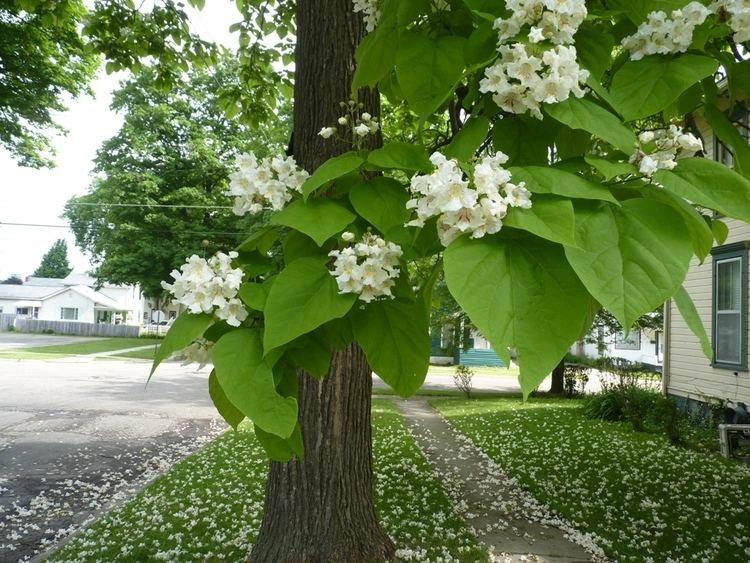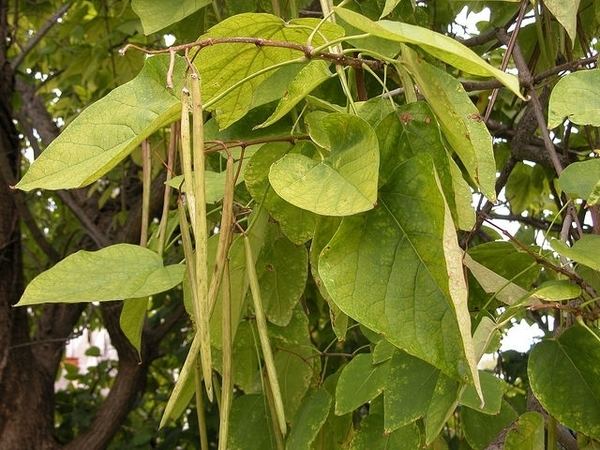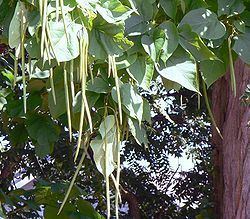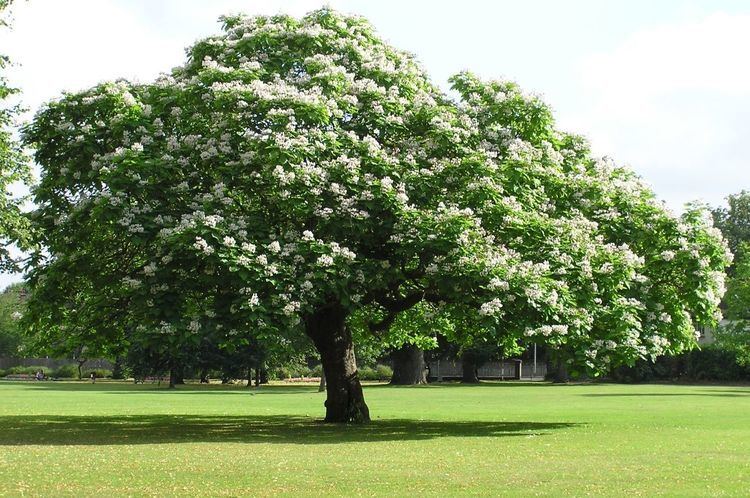Scientific name Catalpa Rank Genus | Tribe Tecomeae | |
 | ||
Lower classifications Catalpa bignonioides, Catalpa speciosa, Catalpa ovata, Catalpa bungei, Catalpa brevipes | ||
Catalpa tree bonsai june 2015
Catalpa, commonly called catalpa or catawba, is a genus of flowering plants in the family Bignoniaceae, native to warm temperate and subtropical regions of North America, the Caribbean, and East Asia.
Contents
- Catalpa tree bonsai june 2015
- Cigar tree catalpa speciosa
- Description
- Species
- Etymology
- Food source
- Other uses
- Selected species
- References

Cigar tree catalpa speciosa
Description

Mostly deciduous trees, they typically grow to 12–18 metres (39–59 ft) tall and 6–12 metres (20–39 ft) wide. A 10-year-old sapling stands about 6 metres (20 ft) tall. They can be recognized by their large, heart-shaped to three-lobed leaves, showy white or yellow flowers in broad panicles. In the autumn they bear 20–50 centimetres (7.9–19.7 in) long fruits that resemble a slender bean pod full of small flat seeds, each with two thin wings to aid in wind dispersal. Because of the leaves, they are sometimes confused with the tung tree (Vernicia fordii) in the southern U.S., or the invasive Paulownia tomentosa from China.

Due to their large leaf size, catalpas are a popular habitat for many birds, providing them good shelter from rain and wind. These trees have few limb droppage, but drop large dark-brown bean pods during late summer. The wood of catalpas is quite soft.
Catalpas begin flowering after roughly 3 years, and produce seed pods after approximately 5 years.
Species
The two North American species, Catalpa bignonioides (southern catalpa) and Catalpa speciosa (northern catalpa), have been widely planted outside their natural ranges as ornamental trees for their showy flowers and attractive shape, or growing habit. Northern and southern catalpas are very similar in appearance, but the northern species has slightly larger leaves, flowers, and bean pods. Flowering starts after 275 growing degree days. Catalpa ovata from China, with pale yellow flowers, is also planted outside its natural range for ornamental purposes.
Etymology

The name derives from the Muscogee name for the tree, "kutuhlpa" meaning "winged head" and is unrelated to the name of the Catawba people. The spellings "Catalpa" and Catalpah" were used by Mark Catesby between 1729 and 1732, and Carl Linnaeus published the tree's name as Bignonia catalpa in 1753. Giovanni Antonio Scopoli established the genus Catalpa in 1777.
The bean-like seed pod is the origin of the alternative vernacular names Indian bean tree and cigar tree for Catalpa bignonioides and Catalpa speciosa, respectively.
Food source
The tree is the sole source of food for the catalpa sphinx moth (Ceratomia catalpae), the leaves being eaten by the caterpillars. When caterpillars are numerous, infested trees may be completely defoliated. Defoliated catalpas produce new leaves readily, but with multiple generations occurring, new foliage may be consumed by subsequent broods. Severe defoliation over several consecutive years can cause death of trees. Because the caterpillars are an excellent live bait for fishing, some dedicated anglers plant catalpa mini-orchards for their own private source of "catawba-worms", particularly in the southern states.
Other uses
Catalpa is also occasionally used as a tonewood in guitars.
